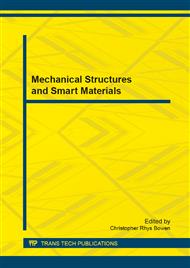p.522
p.527
p.532
p.536
p.540
p.544
p.550
p.558
p.562
Study on Prediction of Reduction Position Based on Solidification and Heat Transfer Model
Abstract:
As one of the important parameters of dynamic soft reduction technology, reduction position seriously affects the using effect of this technology to decrease center segregation and porosity of continuous casting slabs. According to the actual production conditions, a two-dimensional solidification and heat transfer model was established. In order to obtain more accurate model, the heat transfer coefficient was amending by the pin shooting technique in measuring shell thickness. The laws of the effect of casting speed, superheat degree and specific water flow on reduction position were analyzed respectively and reduction positions were predicted in different working conditions based on the model. The experimental results show that the center segregation and porosity decreased obviously when it produces at the reduction position predicted by the model.
Info:
Periodical:
Pages:
540-543
Citation:
Online since:
January 2014
Authors:
Price:
Сopyright:
© 2014 Trans Tech Publications Ltd. All Rights Reserved
Share:
Citation:


